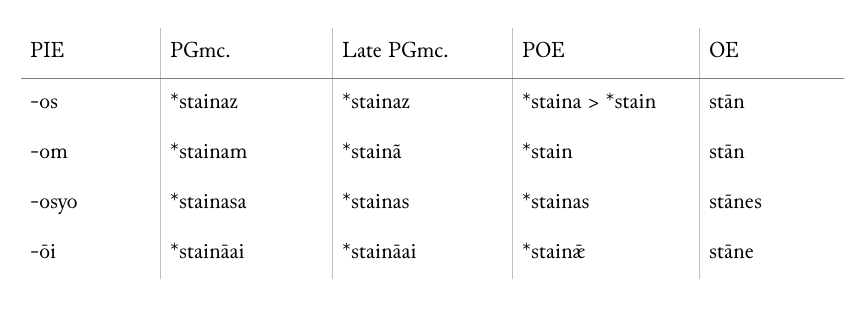Ink, as a tool for writing, has had a profound and ever deepening influence on our perception of the nature of language. It has enabled us to make stills of fractional moments in its evolution and given an artificial solidity to something that has only a very limited expiration date, as language is multiform in the present, through being constantly recreated by various speakers, and remodelled in the process, and variform in its journey across the tongues of generations. The ubiquity of the written word has given language stability and tangibility, but it is, after all, only the stability of an old photograph, which instantly betrays its limitation, once it is compared to the present. But while one may easily see oneself growing and changing in successive photographs, it is much more difficult to do so for the stills taken from language, as its diffusion through the ricochet of millions of speakers on the pinball table of generations happens with an imperceptible slowness that can only be compared with the ageing of time itself. The paradox is – just as we only feel old when seeing ourselves in a picture taken years back – that the very thing that makes language appear so stable today, is also what has brought to our attention, by the study of such written stills from different and widely separated stages in the development of a language, how language is in a never-ending process of expansion and contraction, fusion and diffusion, simplification and elaboration.
Concerning the last of these polarities it is frequently asked why ancient languages are usually more complex than their modern descendants. I would like here not to give a general theoretical explanation of why this might be so, but rather make a short case study of how the older Germanic languages – Old English, Old High German, Old Norse, etc. – developed a much simpler and sleeker case system than the earlier classical languages such as ancient Greek, Sanskrit and Latin. The example here shall be limited to the singular of the so called a-stems, but what is said about their historical development is essentially true for all other nominal stem types in Germanic languages.
The single most influential change that took place in the evolution of the common ancestor of all Germanic languages from the Indo-European mother-language, is the development of the original Indo-European mobile pitch accent, in which accent is marked by lifting of the voice and can be placed any of a word’s syllables, into a fixed stress accent, in which accent is placed by default on a word’s initial syllable and marked by making the syllable in question louder in relation to others. Now what does this mean as far as the sonic shape of a word is concerned? While words pronounced with a pitch accent are most alike to human song or a tone produced on a wind instrument: they are pronounced by a continuous effort of the vocal cords and articulatory muscles; words pronounced with stress fixed on the initial syllable are more like the string of a piano: it is struck, that being the point of highest amplitude, and then the sound gradually fades away. And it is this effect of gradual fadeout, which has, in Germanic languages, caused great changes and simplification in the case endings inherited from the Indo-European mother-language. The fadeout caused by stress accent started gradually, over generations, to erode case endings and simplify the structure of the language by imposing strict limitations on the sounds that can occur in unstressed syllables. Below is a chart of the reconstructed development, from Proto-Indo-European (PIE) over Proto-Germanic (PGmc) into Proto-Old English and finally Old English, of the most common type of masculine noun: the Old English a-stems – here the word for stone is taken as an example – which correspond to the Greek nouns in -os, Latin nouns in -us and Sanskrit nouns in -aḥ. Forms preceded by an asterisk are reconstructed by comparative linguistics and not attested as such, but new discoveries of very ancient fragments of Germanic languages have invariably confirmed that these reconstructions are essentially correct.

Accusative: the ending *-om has been reconstructed using the combined information of Greek, Sanskrit and Latin. In the nominative the original vowel o was preserved in Greek, so there is no reason to believe that the case is any different here. But in Greek the attested ending is –on and not *-om. When one has a look at the –um of Latin and –am of Sanskrit it becomes apparent that Greek must change its final m into n. This is confirmed throughout the language when etymologically identical forms are compared between Greek, Latin and Sanskrit. Now, the Old English accusative is identical to the nominative, i.e. stān, which is believed to be the result of the nasal consonant first assuming the shape of a nasalised final vowel – obviously o again changes regularly into a – which vowel was then also lost, resulting in identical forms for the nominative and accusative and a much simplified structure of the paradigm.
Genitive and dative: *-osyo is reconstructed from the vocalic information contained in Greek –oio and the consonantal information of Sanskrit, where the ending is –asya. This ending would result in –asa in Germanic. As expected the influence of the fadeout erodes the final vowel a, but the consonant s seems to have been more resilient than its cousin z, because all Germanic languages retain this consonant – corresponding to the first consonant of the Sanskrit ending –asya – as the typical sign for the genitive, e.g. English stone’s, German and Icelandic steins. The original vowel a also changed into e as a general process of levelling in the possible vowels occurring in case endings. Note how the different vowel of the dative also results in Old English e.
This short analysis is meant as an example of one of the forces that lie behind the simplification of languages over time. Obviously there are many other and much less clearly graspable influences such as the influence of other languages. And this appears to be the greatest motor behind language change and simplification, once one compares historically very interactive languages such as English and Hindi with a historically very secluded language like Icelandic.
Silvio Zinsstag,
teacher for ancient languages


